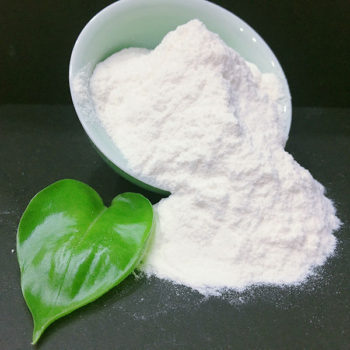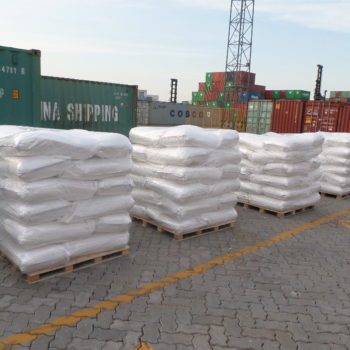Overview of the HPMC market in India
Hydroxypropyl methylcellulose (HPMC) is a versatile compound that finds extensive use in various industries, including pharmaceuticals, construction, and personal care. In recent years, the HPMC market in India has witnessed significant growth, driven by the increasing demand for HPMC-based products. This article provides an overview of the HPMC market in India, highlighting the leading suppliers and industry trends.
India’s HPMC market has experienced robust growth due to several factors. Firstly, the pharmaceutical industry in India has been expanding rapidly, driven by the country’s growing population and increasing healthcare needs. HPMC is widely used in pharmaceutical formulations as a binder, film former, and viscosity modifier. Its ability to improve drug solubility and bioavailability has made it a preferred choice for many pharmaceutical manufacturers.
Additionally, the construction industry in India has been booming, with numerous infrastructure projects underway. HPMC is extensively used in construction materials such as cement, mortar, and tile adhesives. Its water retention properties, improved workability, and enhanced adhesion make it an essential ingredient in these applications. As the construction sector continues to grow, the demand for HPMC is expected to rise further.
The personal care industry is another significant consumer of HPMC in India. HPMC is used in various personal care products, including shampoos, lotions, and creams, as a thickening agent, emulsifier, and film former. The increasing consumer awareness regarding personal grooming and hygiene has fueled the demand for such products, consequently driving the demand for HPMC.
Several suppliers dominate the HPMC market in India. One of the leading players is Ashland Global Holdings Inc., a multinational specialty chemicals company. Ashland offers a wide range of HPMC products under its brand name “Benecel.” The company’s strong presence in the Indian market, coupled with its extensive product portfolio, has contributed to its success in the HPMC industry.
Another prominent supplier is Dow Chemical Company, a global leader in materials science. Dow offers HPMC products under its brand name “METHOCEL.” The company’s commitment to innovation and sustainability has helped it establish a strong foothold in the Indian market. Dow’s HPMC products are known for their high quality and consistent performance, making them a preferred choice for many customers.
Apart from these multinational companies, several local suppliers also play a significant role in the Indian HPMC market. These include companies like Reliance Industries Limited, Zhejiang Kehong Chemical Co., Ltd., and Shandong Head Co., Ltd. These local suppliers cater to the specific needs of the Indian market and provide cost-effective solutions to customers.
In terms of industry trends, the HPMC market in India is witnessing a shift towards sustainable and eco-friendly products. With increasing environmental concerns, there is a growing demand for HPMC products that are derived from renewable sources and have minimal impact on the environment. Manufacturers are investing in research and development to develop bio-based HPMC products that meet these requirements.
Furthermore, technological advancements are driving innovation in the HPMC market. Manufacturers are developing HPMC products with improved functionalities, such as enhanced water retention, faster dissolution, and better film-forming properties. These advancements are aimed at meeting the evolving needs of various industries and providing customers with superior performance.
In conclusion, the HPMC market in India is experiencing significant growth, driven by the expanding pharmaceutical, construction, and personal care industries. Leading suppliers like Ashland and Dow Chemical Company dominate the market, while local players also contribute significantly. The industry is witnessing a shift towards sustainable and eco-friendly products, as well as technological advancements to meet the evolving needs of customers. As the demand for HPMC-based products continues to rise, the market is expected to witness further growth in the coming years.
Key suppliers and manufacturers in the HPMC industry in India
Hydroxypropyl methylcellulose (HPMC) is a versatile compound widely used in various industries, including pharmaceuticals, construction, and food. In India, the HPMC market has witnessed significant growth in recent years, driven by the increasing demand for HPMC-based products. This article will explore the key suppliers and manufacturers in the HPMC industry in India, as well as the latest industry trends.
One of the leading suppliers of HPMC in India is Ashland Inc. With a strong presence in the global market, Ashland offers a wide range of HPMC products for various applications. The company’s HPMC offerings are known for their high quality and consistency, making them a preferred choice for many manufacturers in India. Ashland’s commitment to innovation and customer satisfaction has helped them establish a strong foothold in the Indian HPMC market.
Another prominent player in the Indian HPMC industry is Dow Chemicals. Dow Chemicals is a multinational corporation that offers a diverse range of products, including HPMC. The company’s HPMC products are known for their excellent film-forming properties, making them ideal for applications in the pharmaceutical and construction industries. Dow Chemicals’ strong distribution network and technical expertise have contributed to their success in the Indian market.
In addition to these global players, there are several Indian manufacturers that have made a mark in the HPMC industry. Anikem Laboratories is one such company that specializes in the production of HPMC and other cellulose derivatives. With state-of-the-art manufacturing facilities and a dedicated research and development team, Anikem Laboratories has become a trusted supplier of HPMC in India. The company’s focus on quality control and product customization has helped them cater to the specific needs of their customers.
The HPMC market in India is witnessing several industry trends that are shaping its growth. One such trend is the increasing demand for HPMC in the pharmaceutical sector. HPMC is widely used as a binder, disintegrant, and film-forming agent in the production of tablets and capsules. The growing pharmaceutical industry in India, coupled with the rising demand for generic drugs, has fueled the demand for HPMC-based products.
Another trend in the Indian HPMC market is the growing use of HPMC in the construction industry. HPMC is used as a thickener, binder, and water retention agent in cement-based products such as tile adhesives, grouts, and self-leveling compounds. The booming construction sector in India, driven by infrastructure development and urbanization, has created a significant demand for HPMC in the country.
Furthermore, the increasing awareness about sustainable and eco-friendly products has led to the adoption of HPMC in various industries. HPMC is derived from renewable sources and is biodegradable, making it an environmentally friendly alternative to synthetic compounds. This has further boosted the demand for HPMC-based products in India.
In conclusion, the HPMC market in India is witnessing significant growth, driven by the increasing demand in the pharmaceutical and construction industries. Global players like Ashland Inc. and Dow Chemicals, along with Indian manufacturers like Anikem Laboratories, are leading suppliers of HPMC in the country. The industry trends, such as the growing demand in the pharmaceutical and construction sectors, as well as the focus on sustainability, are shaping the future of the HPMC market in India. As the demand for HPMC-based products continues to rise, it is expected that the market will witness further expansion in the coming years.
Emerging trends and growth prospects in the HPMC market in India
Emerging trends and growth prospects in the HPMC market in India
India’s Hydroxypropyl Methylcellulose (HPMC) market has been experiencing significant growth in recent years. HPMC, a versatile polymer derived from cellulose, is widely used in various industries such as construction, pharmaceuticals, food, and personal care. The increasing demand for HPMC in these sectors is primarily driven by its unique properties, including water retention, thickening, and film-forming capabilities.
One of the emerging trends in the HPMC market in India is the growing demand from the construction industry. HPMC is extensively used in cement-based products, such as tile adhesives, grouts, and self-leveling compounds. Its water retention properties help in improving workability and reducing the risk of cracking. Additionally, HPMC acts as a binder, enhancing the strength and durability of construction materials. With the rapid urbanization and infrastructure development in India, the demand for HPMC in the construction sector is expected to witness substantial growth in the coming years.
Another significant trend in the HPMC market is the increasing use of HPMC in the pharmaceutical industry. HPMC is widely used as a coating agent for tablets and capsules, providing controlled release and improved drug stability. Its film-forming properties ensure the uniform distribution of active pharmaceutical ingredients, enhancing the efficacy of medications. Moreover, HPMC is non-toxic and biocompatible, making it suitable for various pharmaceutical applications. As the pharmaceutical industry in India continues to expand, the demand for HPMC is expected to rise, driven by the need for advanced drug delivery systems.
The food industry is also a key consumer of HPMC in India. HPMC is used as a thickening and stabilizing agent in various food products, including sauces, dressings, and bakery items. Its ability to form gels and improve texture makes it a preferred choice for food manufacturers. Additionally, HPMC is a vegetarian alternative to gelatin, making it suitable for vegetarian and vegan food products. With the increasing consumer demand for convenience foods and the growing awareness of clean label ingredients, the HPMC market in the food industry is projected to witness substantial growth.
Furthermore, the personal care industry is emerging as a significant consumer of HPMC in India. HPMC is used in various personal care products, including shampoos, lotions, and creams, as a thickening and stabilizing agent. Its water retention properties help in maintaining the desired viscosity and texture of these products. Additionally, HPMC acts as a film-forming agent, providing a protective barrier on the skin and hair. With the rising disposable income and changing consumer preferences for natural and organic personal care products, the demand for HPMC in the personal care industry is expected to grow significantly.
In conclusion, the HPMC market in India is witnessing significant growth, driven by emerging trends in various industries. The construction industry is experiencing a surge in demand for HPMC due to its water retention and binding properties. The pharmaceutical industry is increasingly utilizing HPMC for its coating and controlled release capabilities. The food industry is adopting HPMC as a thickening and stabilizing agent, while the personal care industry is incorporating HPMC for its water retention and film-forming properties. With these emerging trends and the growing demand from multiple sectors, the HPMC market in India is poised for substantial growth in the coming years.
Q&A
1. Who are the leading suppliers in the HPMC market in India?
Some of the leading suppliers in the HPMC market in India include Dow Chemicals, Ashland Inc., Shin-Etsu Chemical Co., Ltd., and Colorcon Inc.
2. What are the industry trends in the HPMC market in India?
Some industry trends in the HPMC market in India include increasing demand for pharmaceutical and construction applications, growing awareness about sustainable and eco-friendly products, and technological advancements in HPMC manufacturing processes.
3. What is the market size of the HPMC industry in India?
The HPMC market in India is projected to reach a market size of around USD 200 million by 2025, with a compound annual growth rate (CAGR) of approximately 6% during the forecast period.


